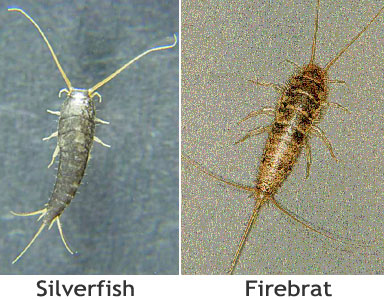Guide to NC Pests
Biology and Behavior
A silverfish female may lay over 100 eggs during her lifetime. Eggs are laid singly or in small groups, hatching in three to six weeks. Young silverfish and firebrats resemble adults except being smaller and more white in beofre taking on the on the adult color in four to six weeks. Adults may live two to eight years. Firebrats lay about 50 eggs at one time in several batches. Eggs hatch in about two weeks under ideal conditions. Unlike other insects, silverfish and firebrats continue to grow and molt throughout their lives. Feeding Activity Silverfish and firebrats feed on many types of paper and fabric. They are particularly attracted to glazed paper or material used in book bindings, which may include starch, glues, or other materials. These insects also feed on carbohydrates and foods high in protein, such as dried beef. Often the first indication of a silverfish or firebrat infestation is the evidence they leave behind. Book bindings that are attacked by silverfish or firebrats may have ragged edges or markings on the bindings. Silverfish and firebrats may also leave cast skins, scales, and/or feces on attacked materials.
Back |
|

